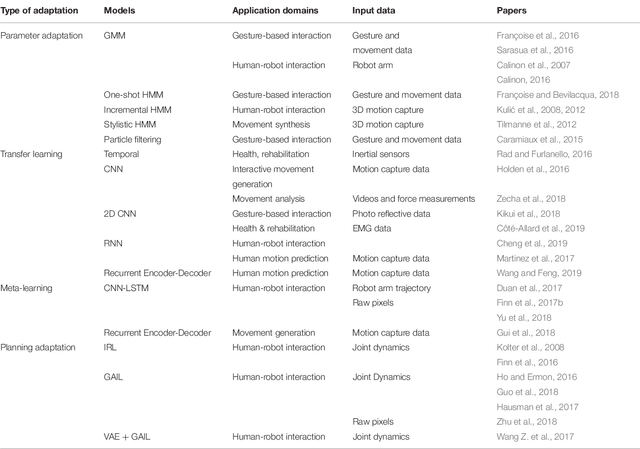Jules Françoise
IRCAM
Entangling Practice with Artistic and Educational Aims: Interviews on Technology-based Movement Sound Interactions
Sep 28, 2022Abstract:Movement-sound interactive systems are at the interface of different artistic and educational practices. Within this multiplicity of uses, we examine common denominators in terms of learning, appropriation and relationship to technological systems. While these topics have been previously reported at NIME, we wanted to investigate how practitioners, coming from different perspectives, relate to these questions. We conducted interviews with 6 artists who are engaged in movementsound interactions: 1 performer, 1 performer/composer, 1 composer, 1 teacher/composer, 1 dancer/teacher, 1 dancer. Through a thematic analysis of the transcripts we identified three main themes related to (1) the mediating role of technological tools (2) usability and normativity, and (3) learning and practice. These results provide ground for discussion about the design and study of movement-sound interactive systems.
Machine Learning Approaches For Motor Learning: A Short Review
Feb 11, 2020
Abstract:The use of machine learning to model motor learning mechanisms is still limited, while it could help to design novel interactive systems for movement learning or rehabilitation. This approach requires to account for the motor variability induced by motor learning mechanisms. This represents specific challenges concerning fast adaptability of the computational models, from small variations to more drastic changes, including new movement classes. We propose a short review on machine learning based movement models and their existing adaptation mechanisms. We discuss the current challenges for applying these models in motor learning support systems, delineating promising research directions at the intersection of machine learning and motor learning.
 Add to Chrome
Add to Chrome Add to Firefox
Add to Firefox Add to Edge
Add to Edge